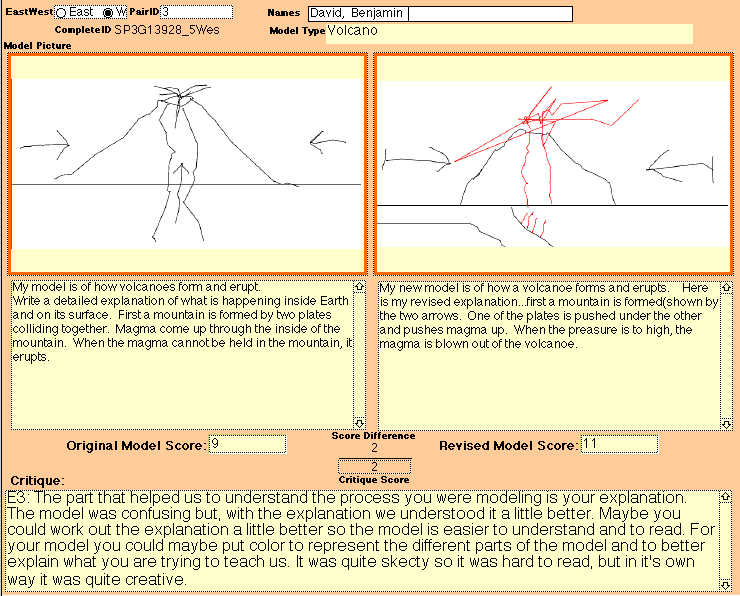Research Results | Volcano 1 | Volcano 2 | Mountain 1 | Mountain 2 | Pre-Post Responses
Volcano Model 2
Examples of Models, Explanations, Learning Partners' Critiques and Revisions for Volcanic Eruption
In the following examples, the model on the left is the students' original model and explanation. On the bottom under "Critique" is their opposite coast learning partners' critique of the model. On the right are students' revised models and revised explanations.

In this example the students' model represents a misconception, i.e., that a mountain is formed and fills up with lava and when it fills up, it erupts. Unfortunately, the learning partners' critique did not include much information upon which a revision could be based; this is possibly due to them not knowing what to do in the case of an "incorrect" model. In the revised model and explanation (which we assume is based on the content of the unit rather than the learning partners' critique), the students have added plate subduction and magma movement as a causal mechanism in how volcanoes are formed and have also included the concept of pressure as building up within the volcano. It is important to note that although their reasoning here is not entirely correct, intuitive conceptions such as pressure are rich, effective pieces of knowledge that can be effectively built upon (Clement, Brown, & Zietsman, 1989) and are usable anchors for developing understanding of convection (Gobert & Clement,1994). As such the revised model represents gain in understanding.

